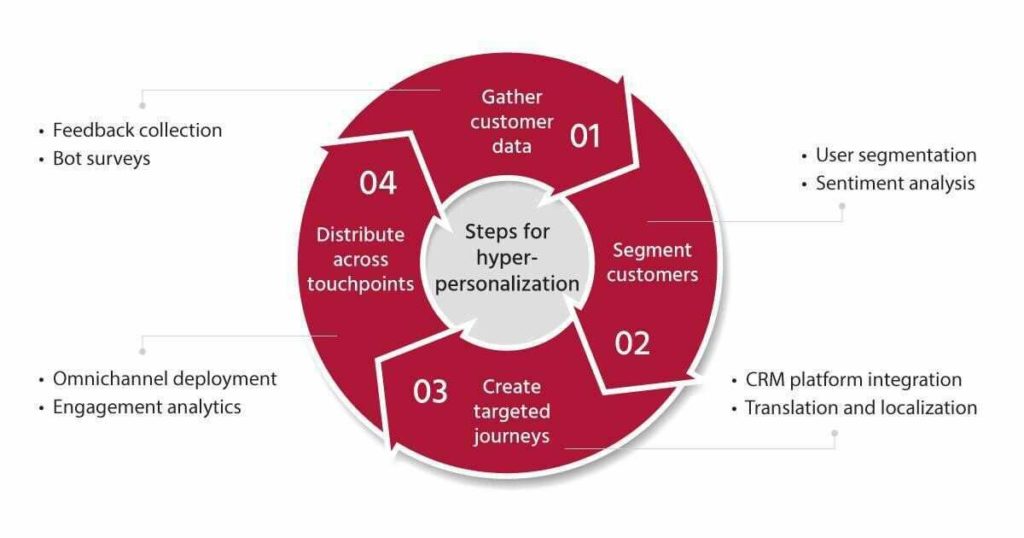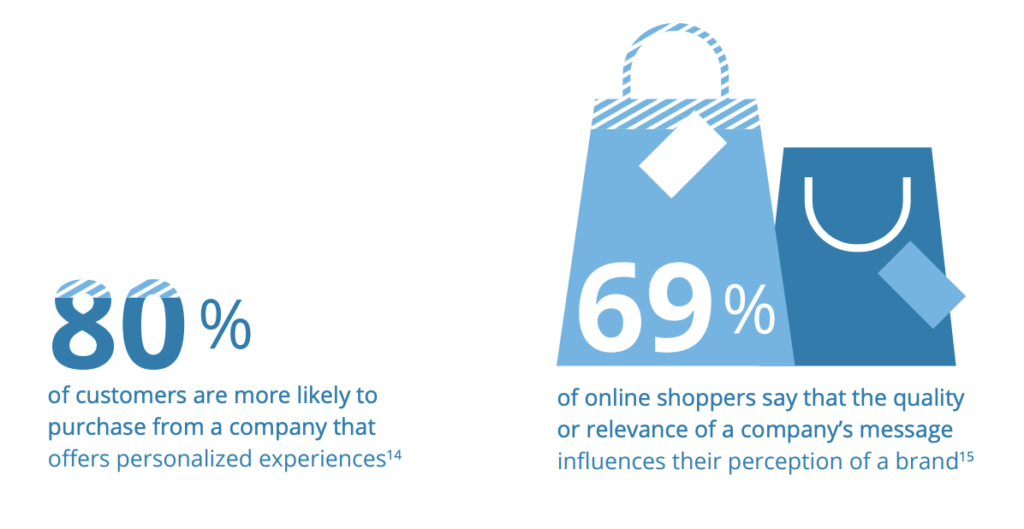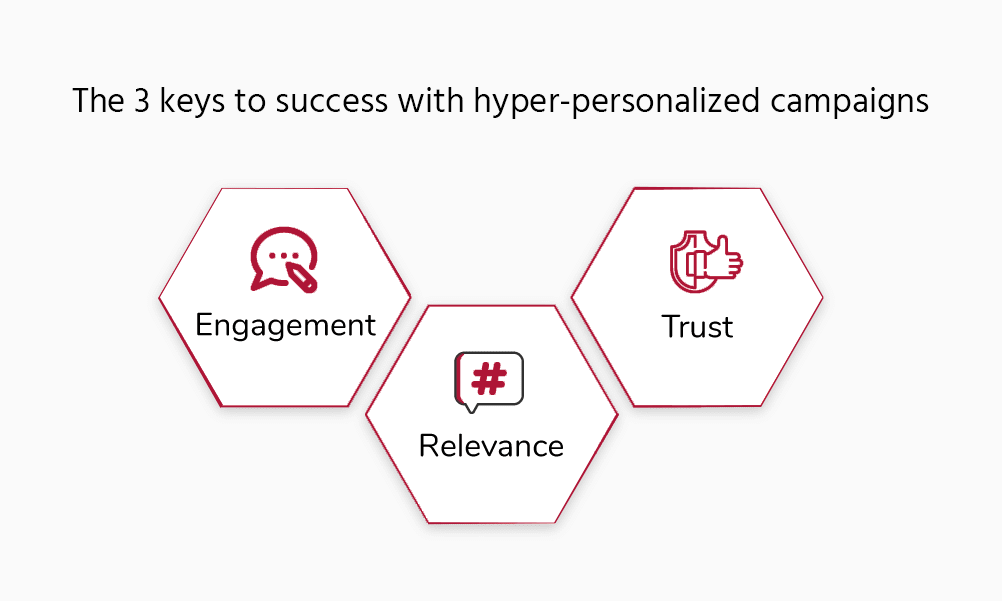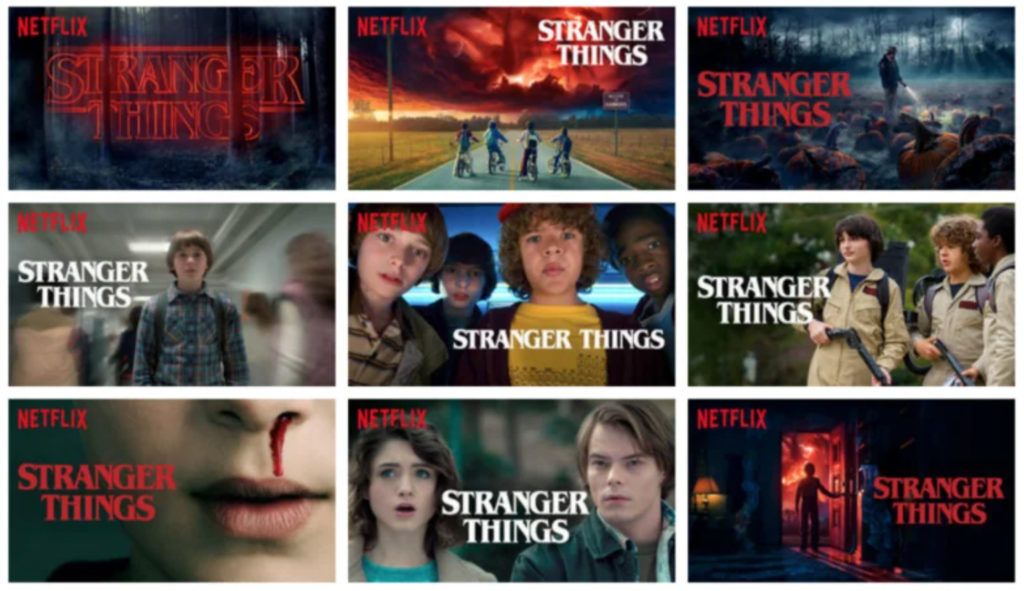The term hyper-personalization is used to describe the process of building a marketing strategy that taps into people’s basic human needs. When done correctly, it can give your brand an edge over competitors and exponentially grow its growth trajectory.
The increased level of personalization is because it is in the best interest of the product or service being promoted to provide each individual with a different experience depending on their needs.
Salesforce reports that 52% of consumers expect offers and companies to be personalized to them. Therefore, it is undoubtedly an approach that you want to consider for your next marketing campaign.
What is hyper-personalization, and how will it take over every marketing department?
How can you successfully implement it in your campaign, and what are the pitfalls to avoid?
This article is your complete guide on hyper-personalization, and you’ll learn everything from improving your campaigns to increasing customer experience and more.
In this article
- What is hyper-personalization?
- What differentiates regular personalization from hyper-personalization?
- Why hyper-personalization matter for your marketing strategy?
- How can you identify your customer's interests and preferences?
- The recipe for success – main components for successful hyper-personalization
- Common pitfalls to avoid when implementing hyper-personalization
- How can you use what big brands have already shown that works in hyper-personalization
- What is the future for personalization in marketing, and how will it change the way we market our products or services to customers
- Our take on hyper-personalization in marketing
What is hyper-personalization?
Personalization is a way of achieving branding, marketing, and selling. Branding is an intangible asset that is difficult to duplicate, and marketing is the delivery of this brand equity via marketing mediums such as packaging, advertisements, distribution, and communications.
But what is hyper-personalization in marketing?
The concept of hyper-personalization has two meanings; the first meaning is to personalize the means of delivery, while the second means personalizing or customizing the output.
Hyper-personalization utilizes AI (Artificial Intelligence) to deliver personalized and more suitable content, products, and services to a specific audience.

It is important to note that this differs from regular personalization in many ways and you’ll be able to elevate your business the right way.
According to an analysis by Deloitte, 80% of consumers are more likely to get their product from a company that offers them a hyper-personalized customer experience.

For this reason, and because hyper-personalization is becoming more and more important compared to regular personalization, let’s jump to our next point.
What differentiates regular personalization from hyper-personalization?
While the concept and the names are similar, there is a wide array of reasons why hyper-personalization will work better for your marketing campaign.
First of all, standard personalization might sound outdated with the data. This is because it mainly focuses on customers’ names, purchase history, cookies, and location. However, hyper-personalization takes it further and can shape your campaign with details such as browsing and purchasing data and comprehensive real-time data.
Secondly, with regular personalization, you’ll use basic features such as the name in the subject line, email programs (cart abandonment, welcome emails, newsletter), or social media ads.
But, by integrating hyper-personalization, you’ll have much more data to focus on. This will allow you to fully customize your campaigns resulting in ads that your customers will like.
Lastly, hyper-personalization will provide essential information such as customers’ affinity (e.g., discounts or free samples), the time of the day where they purchase, and the highest engagement from their notifications.
Hyper-personalization can fully understand what the consumer wants, needs, and prefers.
Why hyper-personalization matter for your marketing strategy?
The answer is quite simple – people want to feel special.
Hyper-personalization helps brands do that by customizing the experience for each customer, creating a sense of exclusivity and understanding that they are essential.
When you are trying to capture a customer’s attention, it’s not enough to know their type of car, favorite sports team, or what their favorite food is. For your campaign to be successful, you need to understand the individual preferences on an emotional level. This process goes back to Freudian psychology and adages such as “know thyself,” but it becomes essential to talk about consumer behavior online.
The need for hyper-personalization also comes from the fact that your competitors are probably already using AI software to increase their sales and interest towards customers. Therefore, if you want to stay on top of the game, adapting your marketing campaign to the right audience is essential.
In plain words, integrating AI and hyper-personalization into your marketing campaigns should definitely be your next step.
How can you identify your customer’s interests and preferences?
As you probably figured out, identifying your customers’ interests, preferences, and needs will benefit both your company and your image.
1. Understand who your customers are
To understand your customers, you’ll have to know who they are. You should start by getting a general understanding of their age, gender, and profession or interests. After that, it’s time to find out more about them through surveys and interviews so you can get an idea of what kind of personas they represent in the digital world. When all is said and done, this will give you the information needed for hyper-personalized marketing strategies that could effectively drive sales online!
It is important to understand your target market before you can successfully offer a service that the customer needs and desired.
2. Listen to the customers’ complaints and feedback
Many customers will not hesitate to tell you what they want and don’t want when it comes to a product or service, so listen!
More often, happy customers will not express their satisfaction. However, unhappy ones definitely will.
Ask customers what they love or hate about your product, then use that feedback to understand their expectations for the future of how it will work. This can help you create a hyper-personalized marketing plan tailored specifically to them—and with less effort than you might think.
3. Invest in customer research
Analyze your statistics and data and conduct customer research to find out more about your customers’ needs, wants, and desires.
Take the data from each individual and compile them together to get a clearer view of how hyper-personalization can be used effectively on an even larger scale.
This will enable you to see trends that may not have been as evident without a more profound analysis.
A customer’s purchase patterns, most-visited items, and browsing history can all give you clues about what they’re interested in. When it comes to marketing, the more personalized your content is for a specific person or group of people, the greater their engagement will be with that message.
The recipe for success – main components for successful hyper-personalization
1. Engagement
The recipe for success is straightforward – engage your audience, know what they want and need to be successful in their own lives, give them the information they need at each step of the process. If you can do this successfully with hyper-personalized content that’s backed by data, then you’ll not only increase sales but also build loyalty through accessibility.
2. Relevance
There are many ways to make your marketing content more relevant for customers, but the best way is by understanding their behaviors. Once you know what they’re doing and how they behave, then it’s possible to create messages that will resonate with them on a personal level.
Achieving this level of insight requires an investment in behavioral data so you can see more than just where someone clicked on a page or which content was most popular. It also requires taking some time for customer development interviews with potential customers every once in a while and creating messages based on intent data – all while still measuring traditional metrics such as bounce rates and conversion rates.
3. Trust
And the best for last – earning your customer’s trust. With the market getting more competitive each day, having your customers trust you will get you in the long run.
The best way to do this is by delivering on your promises and being transparent with all of your customer’s needs – no matter how small they may seem. It all starts with taking care of each customer so well that s/he feels confident enough to place his/her trust in you as an organization.

Hyper-personalized marketing campaigns tend to be more successful than others simply because they address the individual characteristics and likes of a customer.
This is why so many marketers have embraced this strategy as a way to make their products more appealing to the public.
Common pitfalls to avoid when implementing hyper-personalization
Creating your new product advertisement can be very exciting, and your expectations might reach the sky before even starting to analyze your audience. However, there are a few things to know before even thinking about your marketing campaign not to fail.
To start off, one of the most common pitfalls to avoid in terms of hyper-personalized marketing is to start designing your product and campaign before understanding customers’ needs.
Shaping the customer experience with the right CEM platforms, understanding their preference, map their journey, write the most suitable content for them, and only after that, start advertising your products or services.
Additionally, your new customers will not want to spend lots of time clicking buttons, filling forms, and other interaction methods. This is why you’ll need to be straightforward and give your consumers exactly what they want in the shortest time possible.
A relatively new practice you can implement is Atomic Personalization. It involves breaking down content into small components – ready to be customized at scale. It provides personalization at an individual level: both at the point of interaction and channel.
Consumers’ attention span has really gotten short in the past few years, and the longer it takes to get to the correct information, check-out page, or landing page will seriously damage your business in the long term.
Lastly, you should definitely test out your hyper-personalized marketing campaign before advertising it. Of course, this isn’t the easiest task, and it certainly takes time. However, this is an extremely important part and you’ll need to consider all parts of the business such as analyzing your customer data, see if your beta campaign is appealing, and more.
Overall, you should avoid all possible pitfalls to make sure to elevate your business the right way personalizing your ads for your audience.
How can you use what big brands have already shown that works in hyper-personalization
Now that we went through the best ways to integrate hyper-personalization into your marketing strategy to make it successful let’s dig into how the big brands behave and how you can use a similar approach.
Deutsche Bahn
Let’s start by taking the example of the German railway company Deutsche Bahn. Back in November 2018, the company advertised its well-researched and appealing “Save The Flight” campaign.
Essentially, Deutsche Bahn used Artificial Intelligence and Facebook to analyze what consumers researched the most. They then used that data to offer a cheaper, valid, and most comfortable alternative: their train instead of flying. They came up with a powerful advertisement displaying 2 images: 1 was what consumers searched (a flight to Oregon from Hamburg for 1,075 Euros), and 1 was the cheaper alternative they could get (train to Bayern from Hamburg for 19 Euros).
As we can see from the examples below, the images are very similar and allowed customers to save a ton of money while getting a similar travel experience.
Investing in customer research and implementing hyper-personalization to your strategy will work miracles if you do it the right way.

Netflix
Another example of a big brand that made its hyper-personalization campaign excel is Netflix. In fact, the movie-streaming company runs 250 A/B testings every year and used a powerful hyper-personalization marketing strategy to gain new customers and make existing ones loyal.
The way they made it work so well is mostly by using AI to make their recommendation system simply one of the best in the tech world.
To get the proper recommendations for their customers, Netflix uses their search history, rating and viewing data, the kind of device they’ve used to stream movies, and the date they used the platform.
According to the Tech Times, Netflix has in total 76,897 micro-genres of TV shows and movies that make it easier and more practical for their system to categorize its customers’ preferences.
That is to say, Netflix uses its algorithm to recommend specific movies to viewers and get them even more hooked. Also, they use multiple thumbnails and designs for advertising their movies depending on the viewer’s psychology and preference. For example, their show “Stranger Things” has multiple advertising designs that all match a particular audience, as we can see below.

And as it reflects what we discussed before, analyzing all the possible data from your customers and using AI to help discover their preferences is the key to success.
What is the future for personalization in marketing, and how will it change the way we market our products or services to customers
As you probably figured out by now, personalization isn’t only the right way to attract more customers and keep them forever but also the future of all marketing departments.
This is an exciting concept that will enable you to take the most personalized approach and stand out from all of your competitors. In the past, it has been difficult for business owners to take their brand and personalize it to the point that it resonates with the customer.
Hyper-personalization will target your customers better.
While there are a few ways to target your customers and your leads appropriately, hyper-personalization takes it to the next level and will allow all your customers to view advertisements of products they want.
Recommendations will be chosen more accurately based on all the customers’ information and will increase your ROI.
You will have more data available for your marketing strategy.
Everything around personalization marketing is based on data, no surprise there. So if you’re willing to stand out from your competitor, make sure to post surveys, online forms, investigate customers, do data trend analysis and learn their behavior and preferences.
Personalization will bring higher conversions.
According to research by HubSpot where they compared 330,000 calls to action, personalized CTAs can convert 202% more leads compared to regular ones.
Write your calls to action carefully based on the available data and the customer journey, write CTAs that appeal to them, and target your customers the right way.
Our take on hyper-personalization in marketing
Now that you know everything you should know about hyper-personalization in marketing, you can use it to your advantage and elevate your organization as well as increasing customer loyalty.
To conclude, if you’re willing to elevate your business, increase your Return On Investment, and attract as many leads and customers as possible, hyper-personalization is definitely what you’re looking for.



